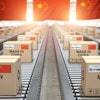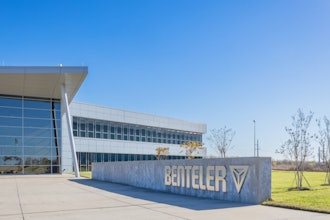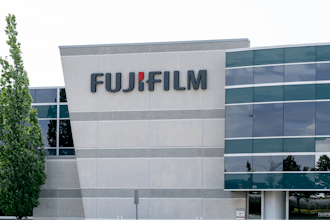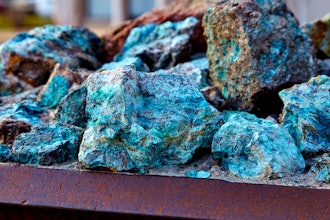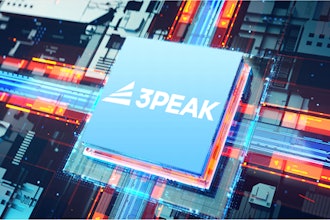An enterprise artificial intelligence (AI) company recently teamed up with a steel company to create the first smart steel production facility of its kind. San Francisco-based Noodle.ai and Big River Steel collaborated to develop a $1.3 billion, 1,300-acre smart steel mill located in Osceola, AR in an effort to help the company meet a growing demand for high-quality steel.
The state-of-the-art facility utilizes predictive AI systems to optimize maintenance planning, line scheduling and logistics operations as well as environmental protection.
IMPO recently spoke with Noodle.ai CEO Stephen Pratt on how predictive AI systems can help manufacturers optimize operations and improve efficiency and safety.
IMPO: How did Noodle.ai get involved with Big River Steel to develop the first smart steel production facility of its kind?
Stephen Pratt: I first met Big River Steel’s CEO, David Stickler, at a manufacturing-focused conference I was speaking at and the first thing he told me was that Big River Steel was really a technology company that happens to produce steel. David shared his vision of creating a “learning mill” or “smart mill” that absorbs mountains of data, analyzes that data and learns from that data to continually improve over time. I knew that was a concept that Noodle.ai could bring to life and that’s where our partnership initiated.
IMPO: In what ways is AI being used at Big River Steel to help the company evolve and meet the growing demand for high-quality steel?
Pratt: The first thing we did for Big River Steel was to examine the financial spread between the price of scrap steel and finished steel. Scrap steel is not a liquid tradable commodity and many mills view scrap steel as a financial risk. Our idea was, could Big River Steel, with the help of learning algorithms, find a mechanism to hedge on scrap prices. The Noodle.ai Material Net deployed at Big River Steel studies information like the difference in price between scrap steel and finished steel, what the demand is for finished steel, as well as how different types of scrap would wear and tear on the mill and impact mill maintenance. Based on all this information, the Noodle.ai Material Net improves the overall profitability of the mill.
There are about 50,000 sensors within the Big River Steel facility, and we’re partnering with the sensor provider directly to ensure our solutions take full advantage of all available sensor data. The data we collect allows Big River Steel to constantly improve operations and predict better approaches to execution based on the insights acquired across mill functions.
Additionally, AI is assisting Big River Steel in predicting and optimizing the amount of energy used to produce finished steel. The Noodle.ai Production Net leverages the Energy Prediction subnet, along with myriad other subnets such as the On-Time Order Release Prediction subnet, to optimize overall scheduling and continually learn over time. Leveraging high-performance computing and massive amounts of historical and real-time data, Big River Steel is greatly improving efficiency and lowering costs.
IMPO: What were some of the challenges involved in implementing AI technology at a steel mill? How were these challenges met?
Pratt: The Noodle.ai team needed to implement AI and predictive analytics into an historic industry and market. This required us to begin extracting the right data and pairing it with advanced learning algorithms to transform Big River Steel into the world’s first “smart mill”. Key to the transformation was leveraging Big River Steel’s sensor data which had transformed their traditional machines into connected machines. Combining the mill’s historical data with industry data and the real-time data these sensors provide, we injected AI into an industry that has been slow to digital transformation.
While we have seen great interest in AI implementation by forward-thinking steel makers all over the world, we were also faced with quite a bit of skepticism from traditional steel makers, regarding the capabilities of AI. Big River Steel is changing that — the revenue results, environmental protection benefits, and the operational efficiency improvements speak for themselves — and the company is investing further bringing other AI solutions to the mill. It’s very important that steel executives begin understanding the power that these technologies have to improve their business outcomes.
Implementing AI into steel mills is going to be a silent revolution, as steel mills improve operations, safety procedures will improve, quality will rise, and the steel companies that failed to adopt will quickly find themselves at a competitive disadvantage — after all, the longer a learning algorithm is in place, the more intelligent it is compared to another that has just come online. The implementation of AI is quickly becoming an industry imperative.
IMPO: How can predictive AI systems help other manufacturers optimize operations and improve efficiency and safety? Any environmental protection benefits?
Pratt: When it comes to the manufacturing industry and plant operations, AI has a triple bottom line incentive. The first bottom line being that AI is a cost-effective, cost-saving solution that increases profits for manufacturers because it generates a more refined resource planning model. The second bottom line for manufacturers involves improved environmental impact, as AI’s resource planning insight allows manufacturers to lower their CO2 emissions and overall plant waste. Big River Steel is a perfect example, this year it became the first LEED (Leadership in Energy and Environmental Design) certified steel mill. The third bottom line that AI brings to the table is improved overall employee safety and safety predictions, which minimize accidents like caster breakouts that could severely harm a steel mill employee.



